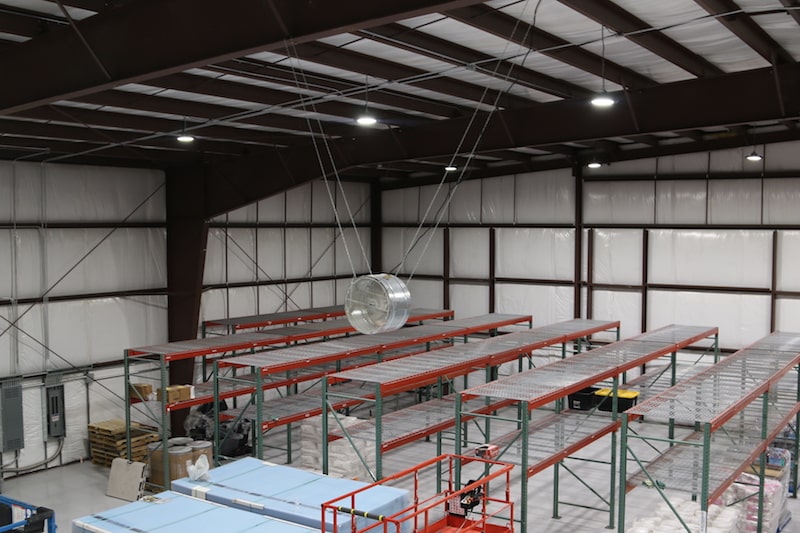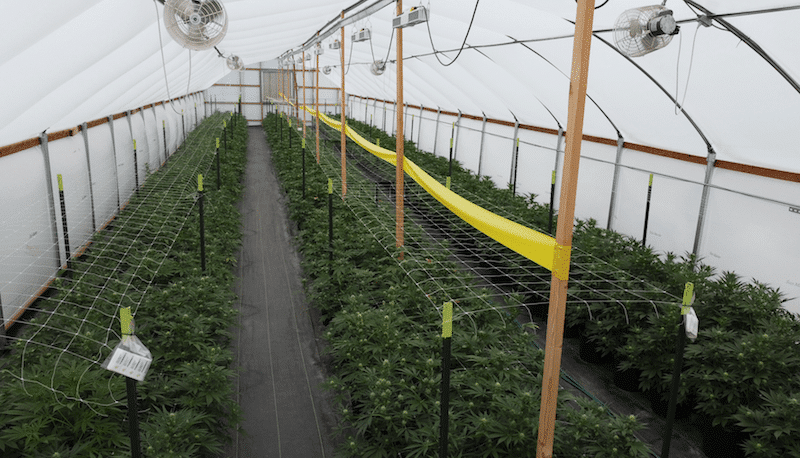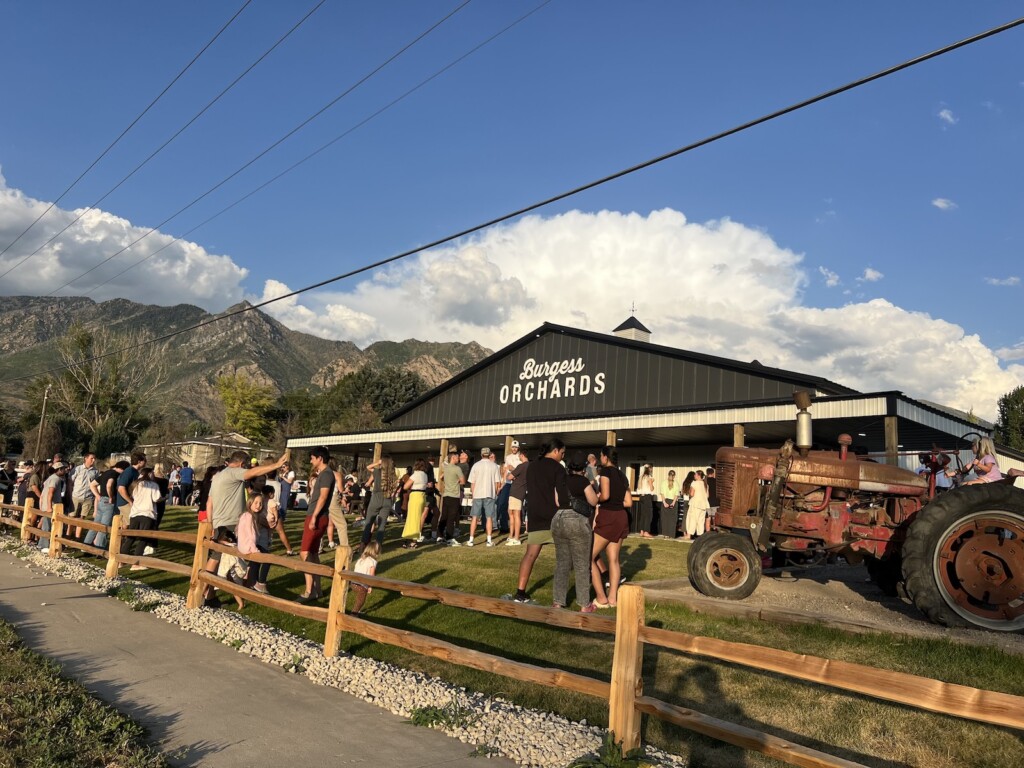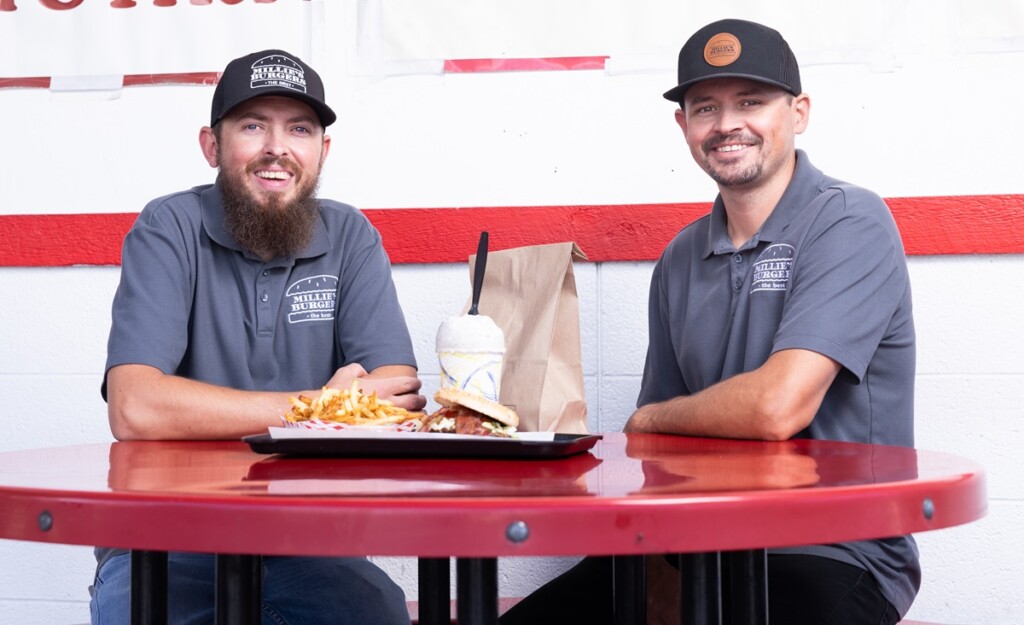
Two years ago there were 80 hopeful applicants vying for the coveted “golden ticket” to be one of ten of the official medical cannabis growers for Utah’s medical cannabis program. Only eight were chosen, one provisionally.
The capital requirements disqualified 90% of applicants. Indoor-growing using hydroponics disqualified many more. To produce a consistent product, an applicant not only needed permission to grow cannabis in a county that would allow it, but they “really needed the ability to grow indoors, under lights in a large facility, with a good grasp of plant nutrition,” according to Scott, head grower at Dragonfly Wellness Cannabis farm. These requirements excluded the vast majority of Utah’s existing agricultural community and farmers.
The cannabis industry in the United States is a $61 billion industry, and 67% of Americans are onboard with its medicinal use.
Even if cannabis becomes a $2 billion industry in Utah, it will be by far the largest cash crop in Utah agriculture, offering the greatest profit margin of any crop produced by farmers. Barley, wheat, potatoes, onions and corn ― all combined ― by comparison are a $527 million industry in Utah. If the legal restriction that 100% of supply must be grown in-state, the financial and economic opportunities, especially for rural Utah, are substantial.
Our question two years ago, when we began covering this bonanza was: Would both the winners and losers of this game, as well as the rules, be controlled by big venture-capital corporations, aka, the elite? Or, would local Utah farmers and rural Utah residents have any chance of competing and winning in the “Green Wave” sweeping the nation?
For answers, I visited Garland, Utah, in hopes of getting an interview with one of the most elusive, locally-owned medical cannabis farms.
Tyler is a tall, thin and plain-spoken 30-something who has the spunk and clear-eyed optimism of a guy who hasn’t grown up playing video games while listening to gangsta rap. He’s dressed in jeans and a shirt. He puts on no airs of ostentation or pretension. Tyler was working at his family’s greenhouse in West Valley when the cannabis bill was slowly moving through Utah’s State Legislature in 2019.
I introduced myself. Garland is a sparsely populated town with cattle ranches and wheat fields. The low, salty-air flatlands and surrounding farms near Promontory Point are enveloped in mist on this drizzly spring day.
“What made you believe that you had a shot at winning a grow license?” I ask Tyler.
“We know how to build greenhouses,” he answered succinctly. He starts by giving me a tour of his first two 30’ x 100’ greenhouses. They are rather small, but orderly, clean and organized with thriving plants.
“Does your family have a lot of experience in growing?” I inquire.
“We have had a family business growing flowers for three generations. My Grandpa started the business. We provide all of the potted flowers for cities like Park City.”
The hoop houses are simple pole structures, with supplemental heat provided by natural gas furnaces. Supplemental lighting is provided by a huge array of LED light panels. It’s cold and chilly outside, warm and humid inside.
“We had to get a four-inch gas line here that could supply 22 million BTUs.” It’s a staggering amount of natural gas, and I had to ask Tyler to repeat that figure three times for me, because this is enough natural gas to supply 3,100 homes.
“Just for those three rather small greenhouses? There must be much more to this facility than it appears,” I thought to myself, remaining silent. I sensed he might want to conclude the tour standing in front of his warehouse.
“You must have somehow gotten my cell phone from my Dad?” And where exactly are you from? Where is this story going to be printed?” Tyler asks me. It seems that I’m going through Tyler’s vetting process. He needs to determine if I’m worthy of going inside whatever is behind the big, secure doors behind him.
Tyler explains: “There are a lot of shady people entering into this who don’t have the best motives. I don’t want to say my last name, and I don’t want you to take any photos of me.” I really don’t want people to even know where this facility is located.”
Barbed-wire fencing and security cameras surround the property. The air of distrust makes me feel like I’m trying to convince Walter White to show me his lab. But Tyler looks like a kid who might have received a valedictorian award at Utah State, but he actually didn’t attend college. He learned everything about botany, hydroponics and operations from working in his family’s business.
I explain that I’ve been writing about farmers and agriculture in Utah for the past twelve years and that I might need to call my friend Thayne Tagge to vouch for me, but that turns out to be unnecessary.
“Okay, we can go inside, but please be nice to us in the story,” He says, and I agree.
Entering the facility with my guest badge, we first visit the office and “the kitchen.” Clad in stainless steel with commercial ovens, stoves, a mixer and refrigerators, the size of this kitchen is larger than most commercial restaurant kitchens, and is obviously to accommodate a significant volume of … what? It seems that there is just one item on the menu ― gummies.
Tyler explains how they decided early on that, “We didn’t want to grow primarily flowers, (the term used to describe the bud, which is smoked) potentially causing people lung problems. We decided instead to focus on extracts and edibles. The Garland grow house’s cook is Tyler’s uncle Steve. He developed their gummy recipe. “We only received our processing license in February, so we are really still just getting started,” he explained.
Steve is packaging a batch, without THC that is going out for samples. We exit the processing area and enter a warehouse the size of a large airplane hangar.
“Wow,” is the only word I repeat several times for the next few minutes. Inside are massive empty shelving units.
“This is our drying and curing area. Eventually, we will move some of our production in here.”
It’s all impressive, but there is one obvious missing component: where are the cannabis plants?
Tyler opens a massive garage door that leads inside of one of the largest greenhouses I’ve seen. Several thousand plants all about 3’ tall appear well-tended, flourishing, vibrant, and growing. On either side of the greenhouse, humidity control systems appear like enormous swamp coolers. Overhead is an enormous array of LEDs.
I tell Tyler that when I visited Dragonfly’s farm in Moroni, they maintained everything completely indoors to make it possible to control all variables. Their grower, Scott, said that complete temperature control is the only method to grow consistent pharmaceutical-grade cannabis ― complete environmental controls including a lighting system to optimize UV rays for veg and flowering stages. This is a huge greenhouse. “I guess you don’t find this necessary?” I ask.
Tyler pulls out his smartphone and opens an app. “Watch the lights,” he says. They shine a bright white as he pulls up the touch graphic of a circle on the “white” spectrum of the app. He then pulls down the white and pulls up the red. The thousands of LEDs on the hundreds of lights in the entire 35,000 square-foot facility transition in about 1 second basking all the green plants in an orange hue.
“This is the spectrum we use to optimize flowering. We can do all of that, but we have a different mindset.”

Tyler explains further: “Because we are producing more edibles than flower, we are focused on biomass. We can produce flower and variety but our focus is on volume.” He then tells me something that truly makes my jaw drop.
“Last year we produced 1,800 pounds. Very soon we will have enough capacity to produce 20,000 pounds. That’s enough to provide enough [cannabis gummies] for the entire state of Utah.”
Tyler adds that by the end of the year, their two 35,000 square foot facilities will certainly drive the cost of edibles down for Utah patients.
“Cancer patients need this. People suffering from chronic pain need this. And we want to make it more affordable,” he tells me.
Early in the week, I spoke to Cody James, manager of Industrial Hemp and Cannabis for the Utah Department of Agriculture. He told me that so far, the cannabis growers are doing a great job and they are all expanding operations and capacity. James also said that demand for medical cannabis has accelerated twice as fast as they projected in Utah, and that the only product that they had some supply problems with were the edibles: gummies. James added that he did not expect the department to have to issue any new grow licenses in the foreseeable future.
Rural Utah’s Hope in The Economic Benefits of Medical Cannabis
Tyler and I started heading back after I saw the massive scale of the second 35,000 grow facility that was still under some construction. I also witnessed the massive breaker panel that supplies the electricity to the LED lights. Tyler explains it’s enough electricity to power all of the homes in Garland.
This all has been a crash course and case study in the future of high-volume, large-scale, organic, hydroponic farming. This one facility alone could provide for all of the medical cannabis needs for a population of more than 2 million people, or ten tons per year.
The Economic Opportunity
The medicine and the benefit that this one facility can provide on less than an acre in rural Utah is highly significant.
“We have about ten employees now. We will need to hire another ten employees in the next few months,” Tyler tells me.
For a town of about 850 households, with a per-capita income of $25,000 per year, the economic benefits are obvious. At least 36 higher-paying jobs for farmers who are as much botanists, geneticists and herbalists.
Compared to the other rural Utah job prospects which include call centers, big box stores, mining, drilling or toxic-waste disposal, and testing rockets, these seem like dream jobs. Working in and around flourishing plants all day, working to crack the code of science that has the promise to alleviate all sorts of pains and ailments to benefit humanity seems quite nice.
The future of this industry is to enable thousands of Utahns to trade their addictive painkillers, depression meds, and addictive pharmaceuticals for an all-natural medicinal herb. It’s very difficult to find any negative aspects to this proposition. Tyler and his partner Brian give me a warm goodbye, and I can see they really hope I don’t butcher their story. (Let’s hope not.)
Subscribe to Utah Stories weekly newsletter and get our stories directly to your inbox





